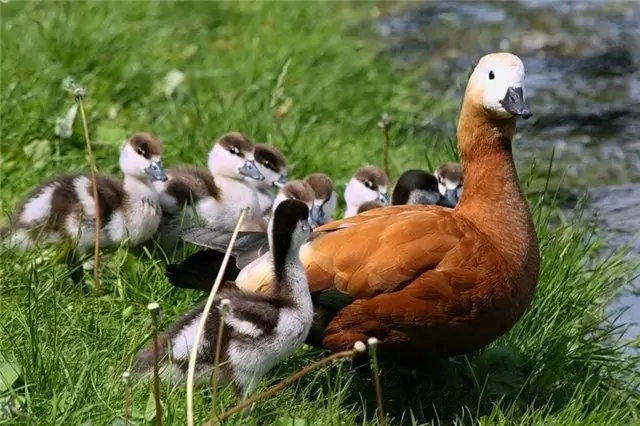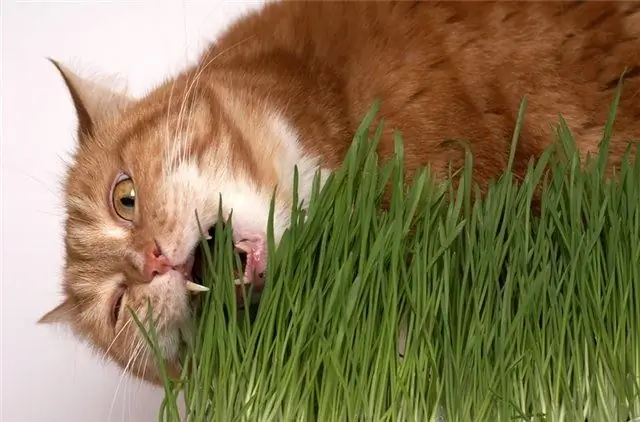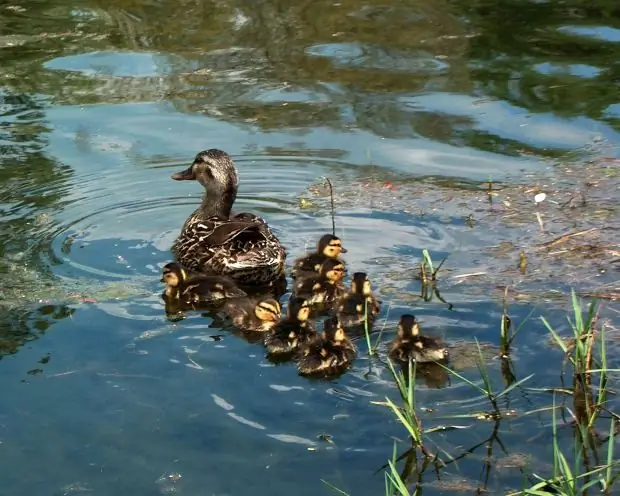- Author Delia Mathews [email protected].
- Public 2023-12-16 00:05.
- Last modified 2025-01-22 15:45.
Duck farming is one of the fastest growing poultry industries. In just two months, you can get a large amount of tender, highly nutritious and juicy meat, as well as excellent fluff. To raise ducks on your farm, you should take into account some of the features of their maintenance.

Keeping ducklings

For growing, they choose mobile ducklings with shiny and bulging eyes, actively reacting to sound and standing firmly on their feet. Chicks are transported in cardboard boxes of twenty heads each. For the first two weeks, the ducklings are raised in cages, then on the floor with walking areas. The place for keeping ducklings should be equipped with vacuum drinkers, trough and trough feeders.

The temperature in the room for ducklings should vary between 28-30 ° C, this can be achieved using stove heating, air heaters or other heating system. This temperature must be maintained for the first three days, then it should be gradually reduced to 22 ° C. Note that if the ducklings are inactive and crowded, the temperature is low. If they move well, actively consume food, the temperature is normal. Ducklings open their beaks, drink a lot, breathe often, spread their wings - the temperature needs to be lowered.

In the first week, the duration of the lighting should be 24 hours. From the second week, daylight hours are reduced by an hour per day. As a result, it should be 9 hours. Protect the young in the first weeks of life from drafts and dampness, do not give too sticky mash, which impede the breathing of the chicks and clog the nasal openings.

Drinkers and feeders should be located so that all chicks have free access to water and feed. Before feeding, give the ducklings warm boiled water with a small amount of potassium permanganate. Feed the young with a crumbly mash, gradually adding more and more greens. Water is needed not only for drinking, but also for washing the beak. Ducklings can be released into the reservoir from 15-20 days of age.

Keeping ducks in winter
A poultry house for the winter keeping of ducks is built in the same way as for chickens. The only difference is the hardware. Use wooden troughs as feeders. Ducks scatter food heavily, eat hastily, so only a third of the trough needs to be filled. The ducks are fed three times a day. The first two feedings should consist of wet mash (mash can consist of grain, dried herbs, boiled potatoes, nettle, pumpkin, silage), it is recommended to give sprouted grain at night. Houses need to be ventilated frequently, as the air becomes suffocating from damp droppings, which can make ducks feel bad. When it's not too cold outside, keep your windows ajar.
Raising ducks in summer
In the summertime, ducks can be kept under a canopy equipped with nests. To control the feeding rate, you need to know that ducks should eat wet food in 40-50 minutes. If the bird eats food faster, then the rate needs to be increased. In summer, ducks eat weed leaves and fruits, meadow grass, animal feed (fish and meat waste, snails and worms, larvae and insects). If you are keeping your birds in the yard, try to provide them with a variety of foods.






